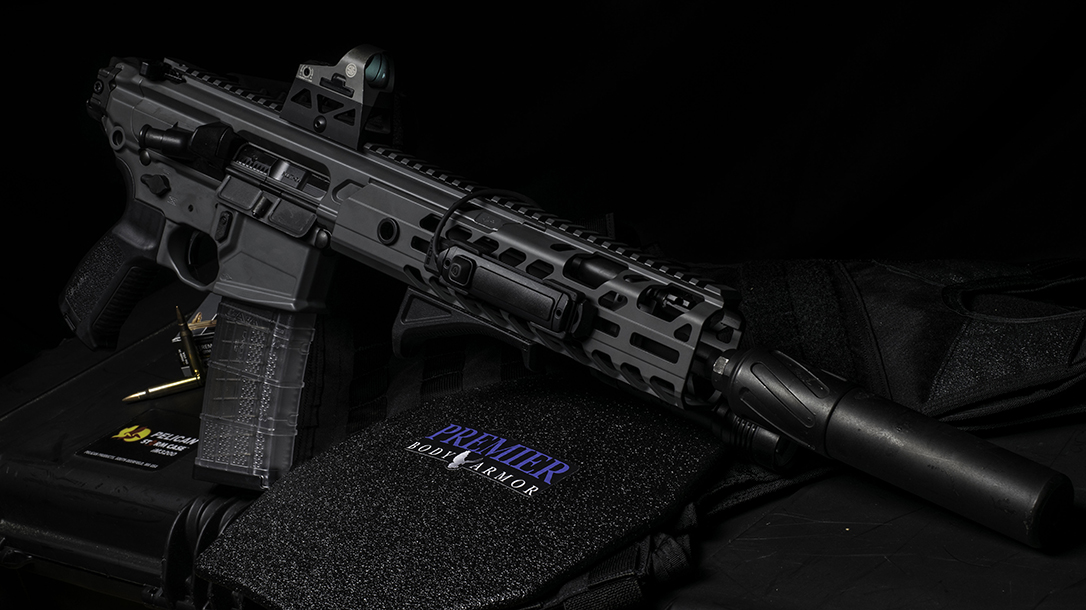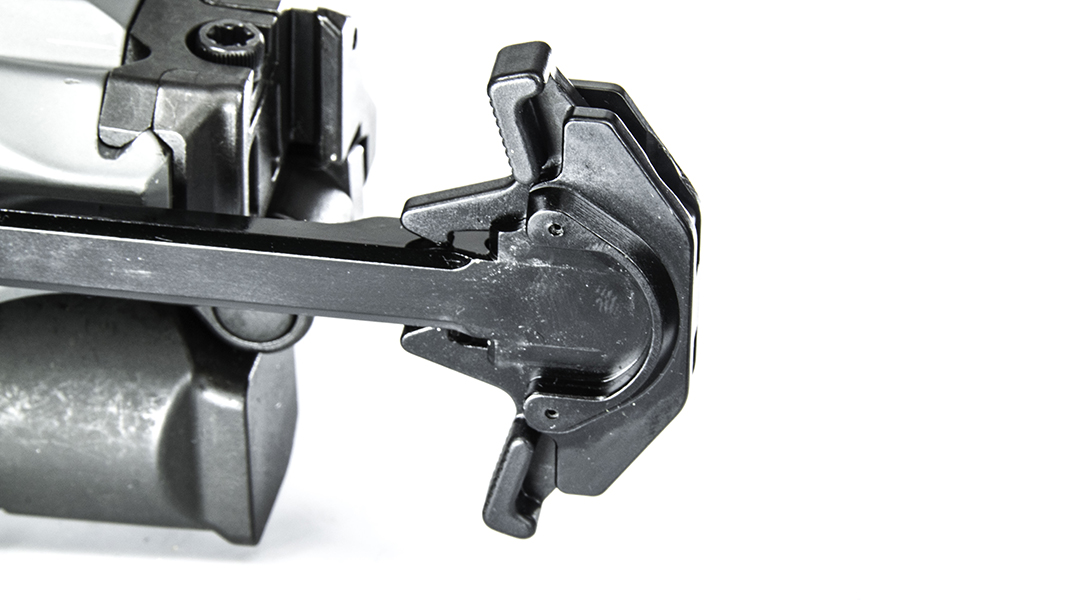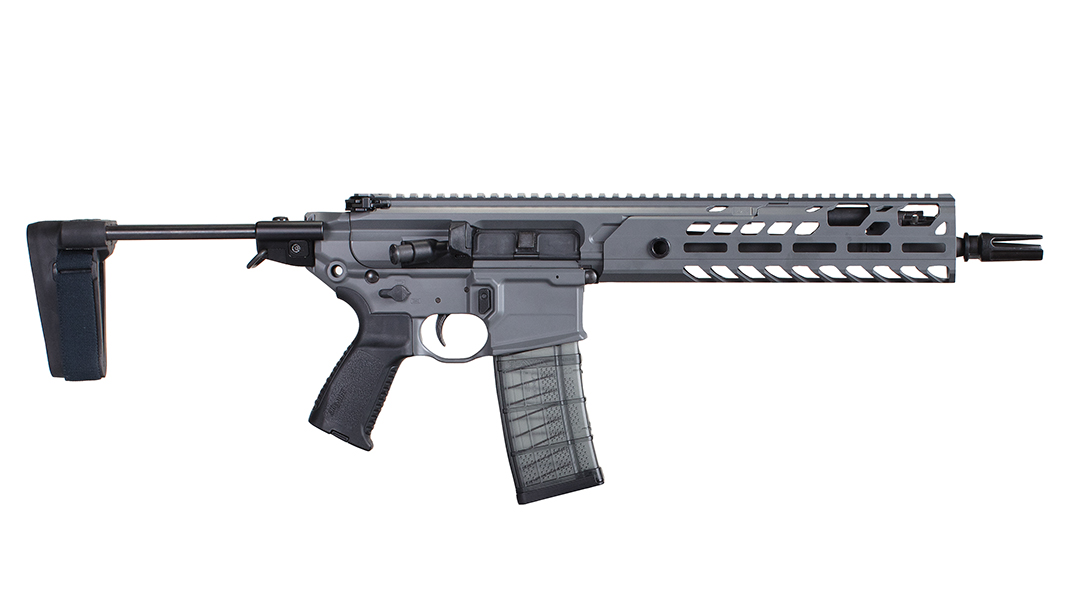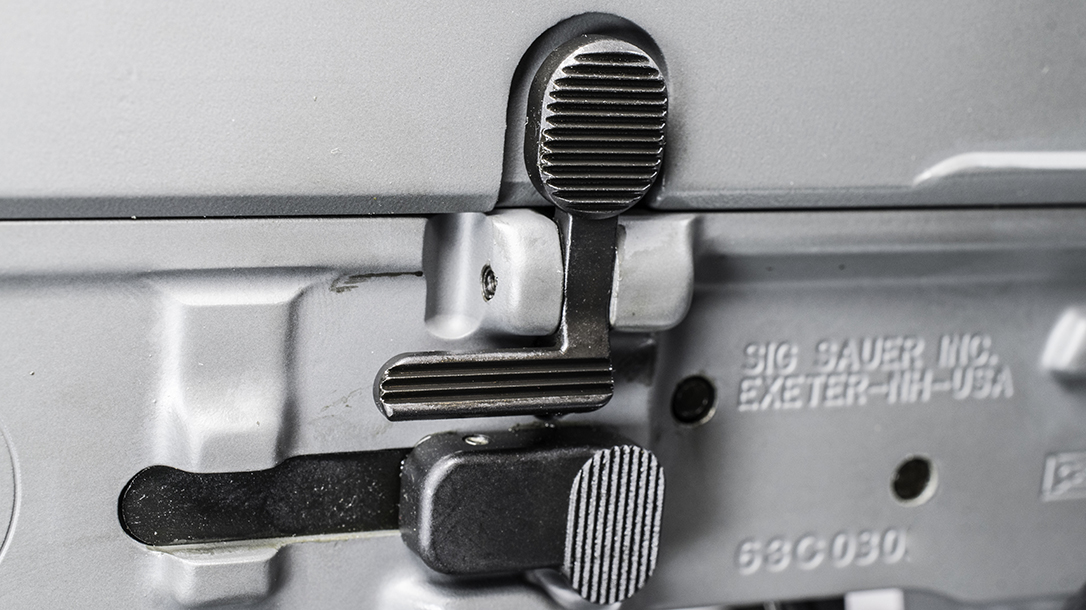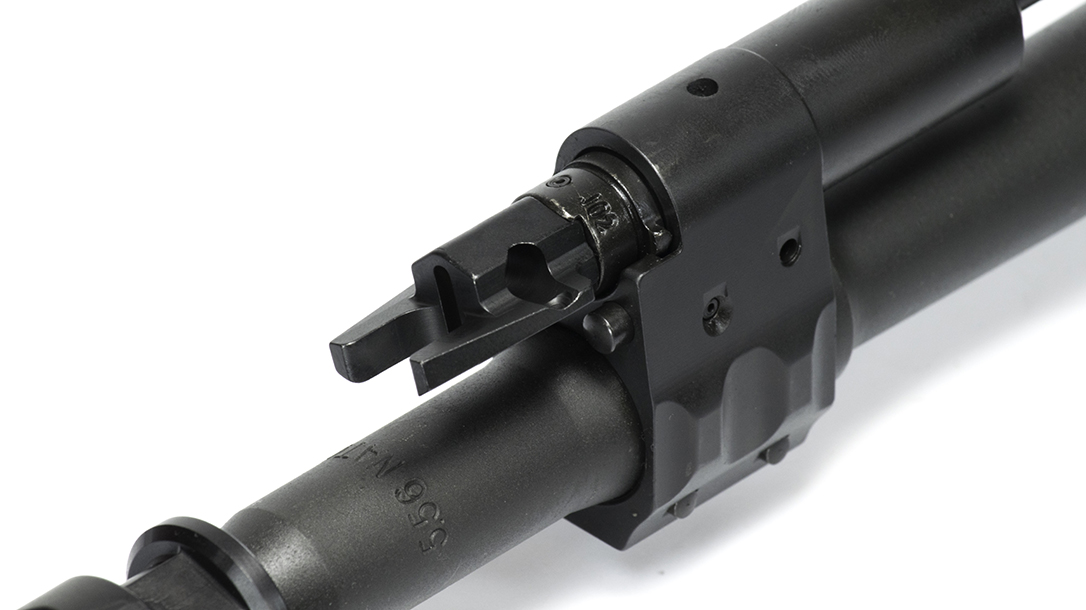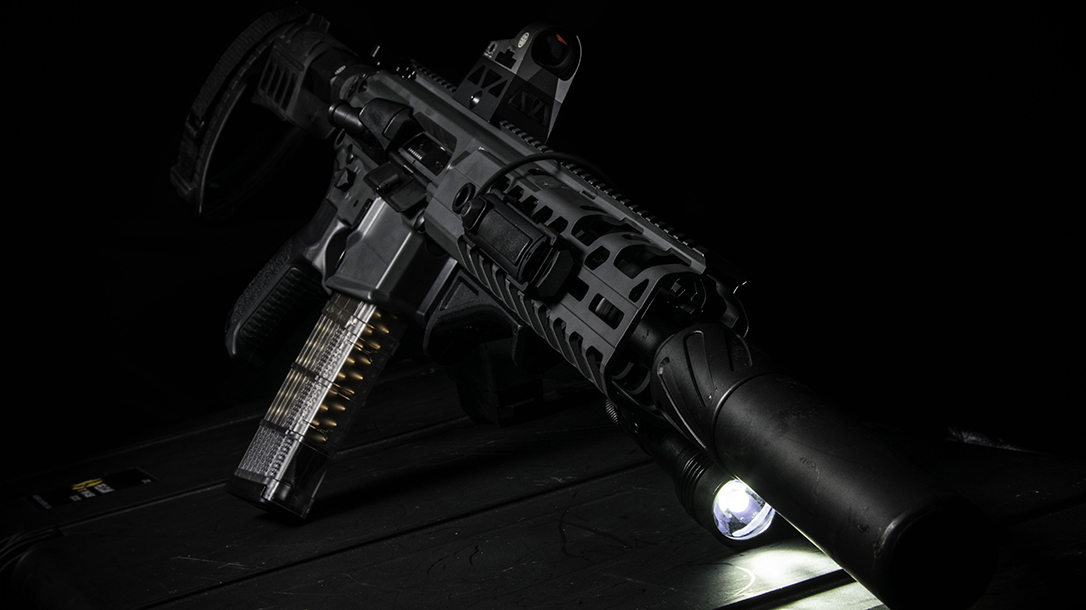I hate cleaning firearms. I’ve always felt that they should have a service life like a Japanese sedan — keep it fueled with ammo, change the oil every few months and be done with it. But anyone who has ever run more than 200 rounds through a gun knows that this is far from the truth. While most firearms can easily run 1,000 rounds without cleaning, good preventative maintenance goes a long way in keeping them in working order.
I got this way after buying my first AR-15. Unbeknownst to me at the time, the Bushmaster varmint-type rifle had an extra-tight match-grade chamber and barrel. Because I was a broke college kid, I ran only the cheapest ammo through the gun. This often resulted in malfunctions so severe that I would have to brace the charging handle on the shooting bench and kick the back of the stock to unlock and clean the action. (Don’t worry, this was on a cleared gun pointed downrange.)
Advertisement — Continue Reading Below
These life experiences are also what made me shun America’s favorite black rifle in favor of seemingly more reliable AKM rifles. But this presented a problem. I was in love with the reliability of the AKM. However, I felt like I was missing out on the AR platform’s vastly better ergonomics, ease of attaching an optic and nearly endless library of aftermarket parts.
What I needed was a modular gun that reliably fired inexpensive 5.56mm ammo with the ergonomics of the AR-15. What I needed was the Sig Sauer MCX Virtus.
Piston Powerhouse
The Sig MCX Virtus pistol is a short-stroke-piston-driven firearm chambered in either 5.56mm NATO or 300 Blackout. It feeds from standard AR-15 or STANAG magazines and ships with a single Lancer L5 Warfighter magazine in the box.
Advertisement — Continue Reading Below
The Virtus series MCXs are available in three major configurations: Patrol, SBR and Pistol. While the Patrol is a 16-inch-barreled carbine, the latter two configurations are available with 11.5-inch barrels in 5.56mm and 9-inch barrels in 300 Blackout. The only difference between the SBR and Pistol models, of course, is the inclusion of a stock on the former. This means it needs to be registered with the Bureau of Alcohol, Tobacco, Firearms and Explosives.
For this review, I decided to check out the pistol version of the Virtus because I was too impatient to wait for the NFA-regulated SBR model. But just because the Sig MCX Virtus Pistol is classified as a handgun, don’t be mistaken: This little blaster is meant for serious work and is loaded with great features.
For example, the MCX Virtus Pistol ships with an ultra-rigid, free-floating M-LOK handguard. It is oversized so you can install a suppressor under it. This is great for shooters who intend to either purchase a shorter barrel or have the included one cut down. In addition to M-LOK slots, the handguard also has quick-detach sling mounts on both sides near the receiver. Combining these with the QD mounts at the rear of the receiver brings the total to four different mounting points.
Advertisement — Continue Reading Below
For this review, I added a Streamlight ProTac Rail Mount 2 to the rail along with a Magpul Angled Fore Grip. Shooters looking to attach other grips should take caution, however. Adding a vertical grip of any sort to a pistol renders it an Any Other Weapon (AOW) in the eyes of the BATFE. So if you desperately need to add a vertical foregrip, you should either buy a model with a 16-inch barrel or acquire a $200 tax stamp first.
The barrel itself is cold-hammer forged and can be quickly swapped out, allowing you to change calibers and barrel length. Shooters who already own a standard MCX should take note: The MCX Virtus utilizes a second-generation MCX barrel and isn’t compatible with first-generation barrels.
Despite the gun’s short 11.5-inch barrel, the Sig Virtus Pistol proved capable of incredible feats of accuracy. Firing from a bench at 50 yards, I ran three brands of 5.56mm ammo through the MCX, each a different weight. While the Federal 55-grain M193 rounds grouped well enough for soda cans and squirrels, Sig’s 77-grain match ammo was the real showstopper. These rounds had an incredible best five-round group measuring 0.46 inches. Given the barrel’s 1-in-7-inch twist rate, this makes sense. The Virtus is designed with accuracy and serious work in mind. But how so exactly?
Advertisement — Continue Reading Below
While 5.56mm NATO rounds are great for their soft recoil and high velocity, the light bullets aren’t ideal for long-range engagements. This is because the rounds are so light that wind tends to have a great effect on them. But it’s not just that. These lighter rounds also have lower ballistic coefficients. This means not only do they fare worse in windy conditions, but they also lose their velocity sooner and deliver less energy at longer ranges.
To compensate for this, civilian and military shooters have found that heavier rounds with greater ballistic coefficients like the 62-grain M855 and the 77-grain M262 hit harder, go farther and retain more of their energy through light cover. Sounds great, but what’s the catch? For a weapon to properly stabilize these heavier rounds, its barrel needs a faster twist rate — hence the MCX’s 1-in-7-inch twist rate.
Another aspect of the new MCX pistol’s design that lends itself to excellent accuracy is the trigger. Sig recently developed a new two-stage trigger for its carbines and pistols that it calls the Matchlite Duo. This trigger provides the perfect balance between safety and a light pull. With a clean break and smooth travel, the Matchlite Duo feels like a military trigger after a gunsmith has taken an hour to clean it up.
Advertisement — Continue Reading Below
More Features
Straight out of the box, the Sig MCX Virtus Pistol feels like a million bucks. The gun doesn’t shake or rattle, and it has enough heft to inspire confidence in its durability. Furthermore, the semi-gloss finish feels phenomenal. Like a cross between Cerakote and pottery glaze, it’s durable yet attractive.
Speaking of the way the Virtus feels, it has incredible ergonomics. While I was previously looking for AR-15-style controls, the Virtus goes a step further and improves upon them while offering shooters a plethora of options. For instance, the engineers at Sig designed the Virtus to use standard AR pistol grips. As such shooters can install whichever grip is their favorite. This feature is at least partially pointless to me personally, as I found the factory pistol grip to be excellent.
The grip features linear checkering on the front- and backstraps with molded stippling on the side panels. The bottom of the grip features a small cap that accommodates two spare CR123 or AA batteries. Plus, the grip has an oversized backstrap that blends into the design. It also allows shooters to choke up on the grip for easier access to the fire control group.
Advertisement — Continue Reading Below
Speaking of which, a cursory glance at these controls reveals that the Sig MCX Virtus Pistol is designed from the ground up to be ambidextrous. Not only is the safety selector ambidextrous, but so is the charging handle and magazine release. Additionally, both of these are oversized to facilitate easier access for shooters with smaller hands.
The magazine release button is nearly twice as large as standard. However, it is seamlessly blended into the receiver. The charging handle works for both left- and right-handed shooters, especially professionals. The latches on the charging handle are ideal for fast reloads and shooters who use either the bladed-hand or thumb-and-index-finger method of charging the action. Also, the oversized latches make clearing any malfunctions a breeze, or so I would guess.
Proven Reliability
I fired about 500 rounds through the Sig MCX Virtus Pistol and never encountered a single malfunction. While the majority of these rounds were fired with the gun in stock configuration, at least 200 were fired with either a SilencerCo Saker 762 or an Innovative Arms sound suppressor attached. This is important because suppressors dramatically increase the rate of fouling and carbon buildup inside the receiver, effectively tripling the round count.
Advertisement — Continue Reading Below
But unlike an ordinary AR, shooters can tune the Virtus to operate more cleanly with a can attached. Just behind the flash suppressor, the MCX Virtus features an adjustable gas valve that regulates the amount of gas pressure siphoned from the barrel. The valve itself clicks into one of two positions: normal and suppressed. The first setting is the standard setting, which allows for optimal pressure to reliably cycle the MCX with proper ammunition. The suppressed setting vents less gas against the piston assembly because of the increased pressure caused by adding a can.
In testing, the gun ran fine in either setting, though the suppressed setting did result in noticeably lighter recoil and decreased fouling. The accuracy didn’t suffer with the addition of an Innovative Arms suppressor provided by the Silencer Shop, but it did make the gun much more enjoyable to shoot.
Ultimately, the Sig MCX Virtus Pistol, like many of Sig’s innovative designs, represents the company’s dedication to building better weapons. The combination of solid ergonomics, relentless reliability and better accuracy makes for a very tempting alternative to the AR-15. Make no mistake, the Sig Virtus Pistol isn’t cheap. But it’s not designed or inclined to be. It’s a piston-driven powerhouse of reliability made for shooters who don’t want to compromise. For more information about the Sig MCX Virtus Pistol, please visit sigsauer.com.
Advertisement — Continue Reading Below
Sig Sauer MCX Virtus Pistol
- Caliber: 5.56mm NATO
- Barrel: 11.5 inches
- OA Length: 22-31 inches (open)
- Weight: 7.4 pounds (empty)
- Grip: Polymer
- Sights: None
- Action: Piston-operated semi-auto
- Finish: Stealth Gray
- Capacity: 30+1
- MSRP: $2,335
